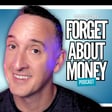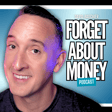
🧩 Sequence of Returns Risk Solved! Karsten Jeske on Safe Withdrawal Rates 📈
Subscribe and Watch on YouTube
🌟 In this episode, David Baughier welcomes Karsten Jeske, aka Big ERN, to explore the critical topics of Sequence of Returns Risk and Safe Withdrawal Rates, essential for anyone planning their retirement. 💼
💡 Karsten shares his journey from a finance professional to a renowned blogger, emphasizing the importance of customized retirement planning and effective risk management. 📈
📝 Episode Highlights:
🎥 Karsten's journey into retirement planning and blogging
🚨 Strategies to manage Sequence of Returns Risk
💡 Effective safe withdrawal rates and retirement timing
📊 Insights into diversified portfolio and asset allocation
🔍 Options for your retirement income strategies
🔗 Karsten’s Links:
📣 Big ERN's CampFI Talk about the Need for Precision
🔗 David's Links:
🍏 Forget About Money on Apple Podcast
🎧 Forget About Money on Spotify
#️⃣ Hashtags: #SequenceOfReturnsRisk #SafeWithdrawalRates #RetirementPlanning #KarstenJeske #MarketVolatility #RetirementIncome #AssetAllocation #DiversifiedPortfolio #NegativeReturns #FinancialSecurity #TaxEfficientRetirement #FI #FinancialIndependence #EarlyRetirement
🕒 Timestamps/Chapters:
0:00 - 🚀 Introduction to Sequence of Returns Risk and Safe Withdrawal Rates
2:32 - 👨🏫 Karsten Jeske's Background and Expertise
5:03 - 📊 Transitioning from Professional Work to Blogging
11:11 - 💼 Karsten's Experience in Finance and Economics
14:37 - 📉 Defining Sequence of Returns Risk and Safe Withdrawal Rate
23:46 - 🕵️♂️ Factors to Consider Before Officially Retiring
29:11 - ⏳ Planning for Retirement Timing and Market Factors
36:06 - 🔄 Mindset Shifts from Accumulation to Decumulation
39:55 - 🌐 Navigating the Safe Withdrawal Rate Series on the Blog
40:21 - 🔥 Introduction to the Fire Community
47:04 - 📚 Importance of Research Before Retirement
52:16 - 💡 Debunking the Bucket Strategy
1:05:19 - 📉 Managing Sequence Returns Risk
1:14:55 - 📉 Considering the Risk of a Recession
1:17:37 - 💬 Perception of Safe Withdrawal Rates
1:19:34 - 🧠 Acknowledging Expertise in Safe Withdrawal Rates
🎧 Listen & Subscribe:
Don’t forget to subscribe to "Forget About Money" for more insightful episodes featuring experts who guide you on simplifying your finances and achieving financial independence. Hit the bell icon 🔔 to get notified of new episodes!

